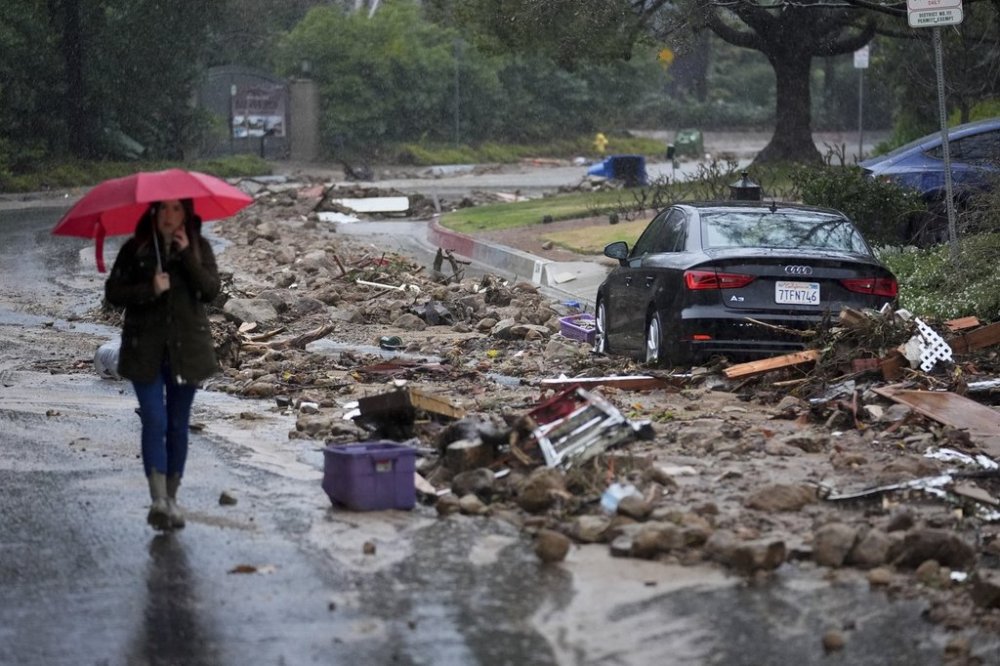Study shows rain-soaking atmospheric rivers are getting bigger, wetter and more frequent
Advertisement
Read this article for free:
or
Already have an account? Log in here »
To continue reading, please subscribe:
Monthly Digital Subscription
$0 for the first 4 weeks*
- Enjoy unlimited reading on winnipegfreepress.com
- Read the E-Edition, our digital replica newspaper
- Access News Break, our award-winning app
- Play interactive puzzles
*No charge for 4 weeks then price increases to the regular rate of $19.00 plus GST every four weeks. Offer available to new and qualified returning subscribers only. Cancel any time.
Monthly Digital Subscription
$4.75/week*
- Enjoy unlimited reading on winnipegfreepress.com
- Read the E-Edition, our digital replica newspaper
- Access News Break, our award-winning app
- Play interactive puzzles
*Billed as $19 plus GST every four weeks. Cancel any time.
To continue reading, please subscribe:
Add Free Press access to your Brandon Sun subscription for only an additional
$1 for the first 4 weeks*
*Your next subscription payment will increase by $1.00 and you will be charged $16.99 plus GST for four weeks. After four weeks, your payment will increase to $23.99 plus GST every four weeks.
Read unlimited articles for free today:
or
Already have an account? Log in here »
Hey there, time traveller!
This article was published 12/03/2025 (242 days ago), so information in it may no longer be current.
WASHINGTON (AP) — As extreme weather events have hit the world hard in recent years, one meteorology term — atmospheric rivers — has made the leap from scientific circles to common language, particularly in places that have been hit by them.
That stands to reason.
The heavy rain and wind events most known for dousing California and other parts of the West have been getting bigger, wetter and more frequent in the past 45 years as the world warms, according to a comprehensive study of atmospheric rivers in the current issue of the Journal of Climate.

Atmospheric rivers are long and relatively narrow bands of water vapor. They take water from oceans and flow through the sky dumping rain in prodigious amounts. They have increased in the area they soak by 6 to 9% since 1980, increased in frequency by 2 to 6% and are slightly wetter than before, the study said.
Scientists have long predicted that as climate change from the burning of coal, oil and gas makes the air warmer, it holds more moisture, which means bigger, nastier atmospheric rivers are coming in the future. This week’s study shows that a more moist future is already here.
“This doesn’t mean that it’s necessarily all because of climate change. We didn’t study that, but it does line up, broadly speaking, with some expectations of how (atmospheric rivers) will change in a warming atmosphere,” study lead author Lexi Henny, an atmospheric scientist at the University of North Carolina who did her research while at NASA.
What’s happened already “is still small relative to the changes that we think are going to happen” in a future warmer world, Henny said.
While atmospheric rivers can bring much needed rain to drought-struck places, they are often dangerous when they are strong and last long. Just over a year ago a series of atmospheric rivers caused hundreds of mudslides and killed several people in California. In the 1860s, California had to move its capital out of Sacramento because of an atmospheric river flooding.
These events aren’t just a California thing. They actually happen all over the United States and the world, though sometimes don’t get recognized as atmospheric rivers, Henry said. An atmospheric river in New England in 2023 brought a foot of rain and 50 mph winds. A 2020 atmospheric river dumped 99 inches of snow on Alaska.
The paper not only makes sense, but is rich with new details and data that will help researchers figure out what will happen with these bouts of intense rain and snow in the future, said Christine Shields, a water scientist at the National Center for Atmospheric Research, who wasn’t part of the research.
___
The Associated Press’ climate and environmental coverage receives financial support from multiple private foundations. AP is solely responsible for all content. Find AP’s standards for working with philanthropies, a list of supporters and funded coverage areas at AP.org.


